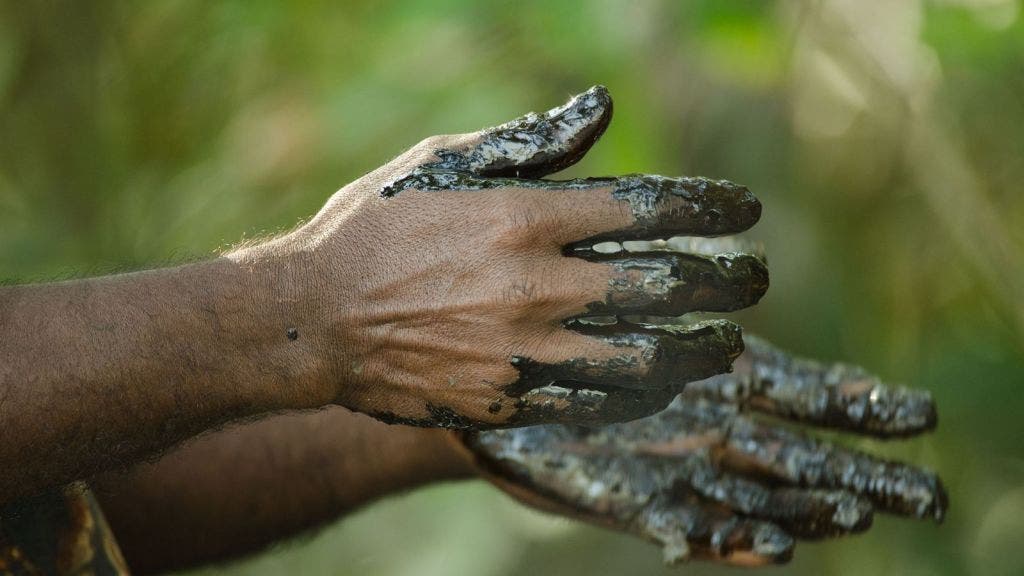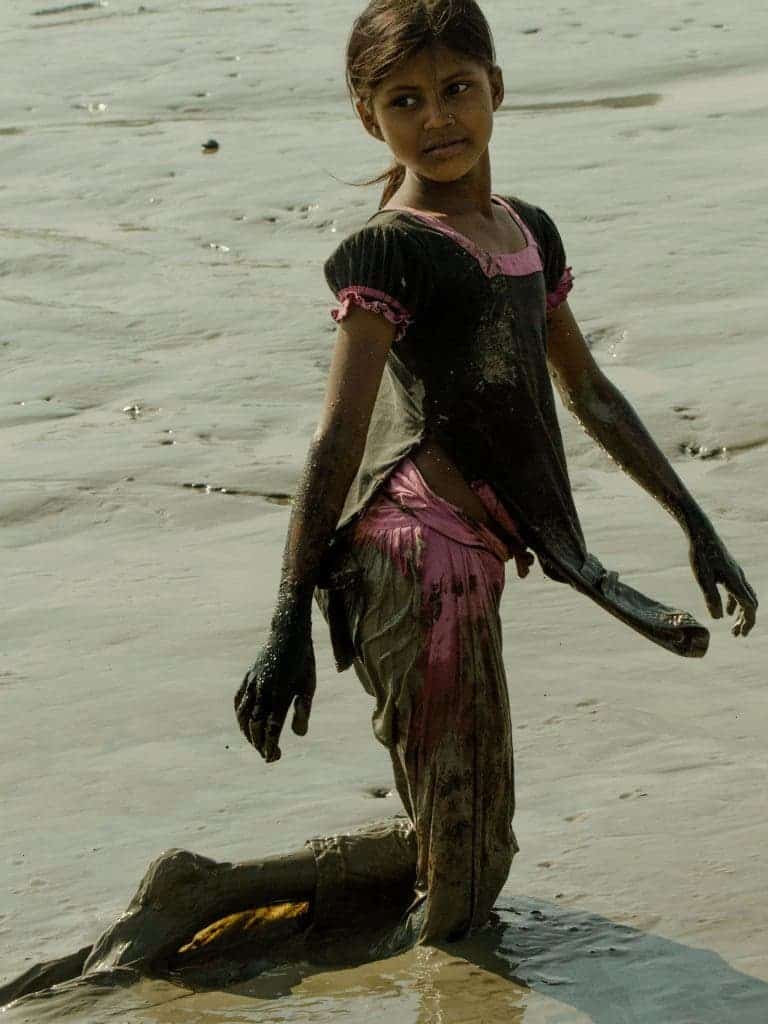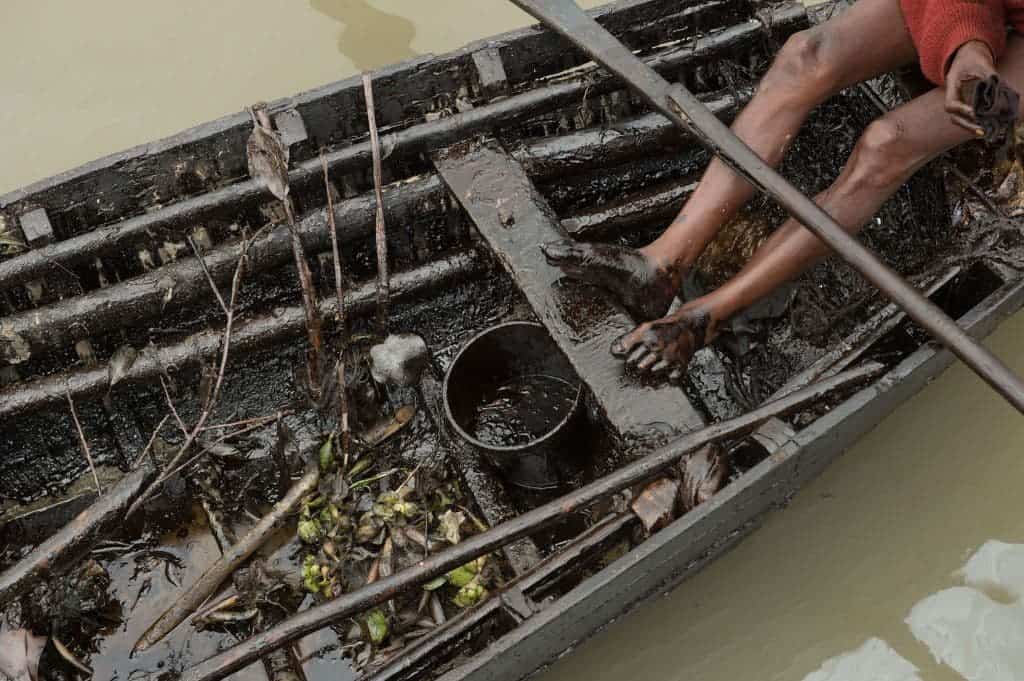On 9 December 2014 an oil spill occurred at the Sela river of Sundarbans, Bangladesh, a UNESCO World Heritage site. An oil tanker named Southern Star VII, carrying 350,000 litres of oil was sunk in the river after it had been hit by a cargo vessel. Neither the state owned oil company (Padma Oil Company) nor the government itself has shown any real interest in cleaning the oil spill, so now, the damage is taken care of by locals working with their bare hands.

The spill occurred on the Sela river – part of the Sundarbans, the largest unbroken stand of mangrove forests in the world. This is a unique ecosystem, with trees and shrubs specially adapted to saline coastal sediment habitats in the tropics and subtropics. The mangrove forests also hosts some of the most endangered creatures: the masked finfoot, the Irrawaddy, Gangetic, and four other kinds of dolphins, as well as the Bengal tiger and the beautiful, endangered Sundari tree (Heritiera fomes). There have also been reports of crocodiles, monitor lizards and many other animals smeared with oil in the Sundarbans.
Oil shouldn’t have been transported in the Sundarbans in the first place. Yet in Bangladesh, tankers carrying “modified cargo”—oil, pesticides, fertilisers, insecticides, fly ash, cement, sand, and salt—travel through these channels every day. There’s actually heavy traffic in the area, and sooner or later this was almost bound to happen – two vessels collided an there was an oil spill.
Naturally, you’d expect some sort of cleaning intervention… but the intervention wasn’t the one you’d expect.

14 days after the oilspill, QZ.com vizited the spill area.
“Men, women, and children were knee deep in the mudflats and elbow deep in heavy fuel oil. They were scraping black, viscous goo from sedges, reeds, leaves, trunks and roots. Each painstaking handful of black pulp collected was smeared off along the rim of a cooking pot. Then, they turned back to the plants for more. Children, mostly aged between 10 years and 16 years, were covered in black from toe to waist”, they report.

The public reaction was strong; in Dhaka, the capital of Bangladesh, public outrage was sparked in newspapers, and social media channels were flooded with images of tigers and dolphins drenched in oil. Authorities responded that the oil spill is being taken care of and everything is under control… and apparently, by that, they mean that the population is cleaning it by hand – children included.
A spill of this magnitude required prompt and solid efforts, but the intervention has been slow and ineffective – not to mention unscientific and hazardous. It’s the 21st century, and people are cleaning oil spills by hand. Fishermen, who are most affected by the oil spill all scrape the goo by hand and collect floating smeared plant matter that they dump into their boats.

“The boats are towed back to the village “depot” by the forest department, which is coordinating the effort (with local NGOs). Here, the plant matter is boiled and heated to loosen the oil. This is collected in barrels, and trucked back to Padma Oil. The fishermen are doing all the collection and boiling without any protective gear. They are smeared in oil by day on the river, and engulfed in its fumes when they get home. These oils contain chemicals that are toxic. It can have dire digestive, pulmonary, and dermatological effects and, if the exposure extends over time, also neurotoxic effects.
A dozen days after the spill, the children of Joymoni have begun to fall sick. But right now, it is all about recovering and selling back the oil”, QZ concludes.
Article and pictures source: QZ.






